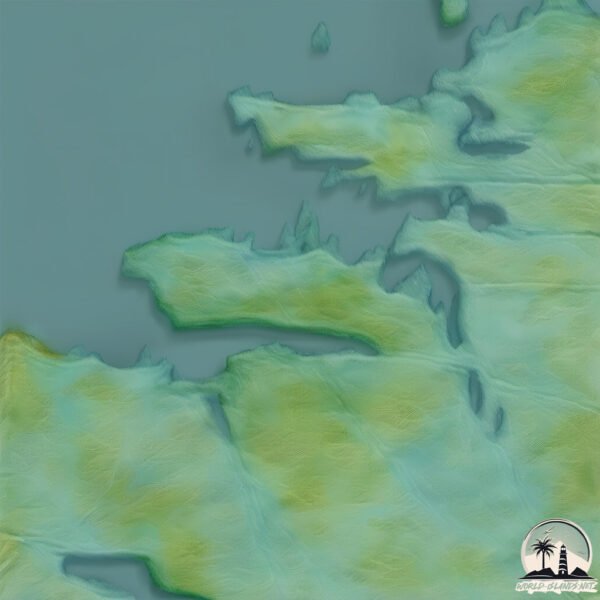Ban

Welcome to Ban, a Continental island in the Gulf of Alaska, part of the majestic Pacific Ocean. This guide offers a comprehensive overview of what makes Ban unique – from its geography and climate to its population, infrastructure, and beyond. Dive into the details:
- Geography and Size: Explore the island’s size and location.
- Climate and Weather: Weather patterns and temperature.
- Topography and Nature: Uncover the natural wonders of the island.
- Infrastructure and Travelling: Insights on reaching, staying, and making the most of your visit.
- News and Headlines: Latest News.
Geography and size of Ban
Size: 27.5 km²
Coastline: 53.9 km
Ocean: Pacific Ocean
Sea: Gulf of Alaska
Continent: North America
Ban is a Medium Island spanning 27 km² with a coastline of 54 km.
Archipel: –
Tectonic Plate: North America – Covers North America and parts of the Atlantic and Arctic Oceans, characterized by diverse geological features and varying levels of seismic activity.
The geographic heart of the island is pinpointed at these coordinates:
Latitude: 58.31575286 / Longitude: -152.86107548
Climate and weather of Ban
Climate Zone: Continental
Climate Details: Subarctic Climate
Temperature: Cold Summer
Climate Characteristics: Characterized by long, extremely cold winters and short, cool summers, often found in northern latitudes of North America and Eurasia.
Topography and nature of Ban
Timezone: UTC-09:00
Timezone places: America/Anchorage
Max. Elevation: 528 m
Mean Elevation: 253 m
Vegetation: Deciduous Needleleaf Forest
Tree Coverage: 67%
The mean elevation is 253 m. The highest elevation on the island reaches approximately 528 meters above sea level. The island is characterized by Plateau: Elevated flatlands rising sharply above the surrounding area, with a maximum elevation over 500 meters but a mean elevation less than 300 meters, forming unique highland areas on islands.
Dominating Vegetation: Deciduous Needleleaf Forest
Consists of needleleaf trees that shed their needles annually. This type of forest is less common and can be found in certain cold, northern regions. Ban has a tree cover of 67 %.
Vegetation: 8 vegetation zones – Very Highly Diverse Island
Islands in this range are ecological powerhouses, showcasing a wide array of vegetation zones. Each zone, from lush rainforests to arid scrublands, coastal mangroves to mountainous regions, contributes to a complex and interdependent ecosystem. These islands are often hotspots of biodiversity, supporting numerous species and intricate ecological processes.
Infrastructure and Travelling to Ban
Does the island have a public airport? no.
There is no public and scheduled airport on Ban. The nearest airport is Port Lions Airport, located 45 km away.
Does the island have a major port? no.
There are no major ports on Ban. The closest major port is BEAR ISLAND, approximately 19 km away.
The mean population of Ban is 0 per km². Ban is Uninhabited. The island belongs to United States of America.
The name of the island resonates across different cultures and languages. Here is how it is known around the world: Arabic: جزيرة كودياك; German: Kodiak-Insel; Spanish: Isla Kodiak; French: Île Kodiak; Portuguese: Ilha Kodiak; Russian: Кадьяк; Chinese: 科迪亚克岛
Continuing your journey, Afognak is the next notable island, situated merely km away.
United States of America is classified as Developed region: G7: Group of Seven – Major advanced economies, including Canada, France, Germany, Italy, Japan, the United Kingdom, and the United States. The level of income is High income: OECD.
News – Latest Updates and Headlines from Ban
Stay informed with the most recent news and important headlines from Ban. Here’s a roundup of the latest developments.
Please note: The data used here has been primarily extracted from satellite readings. Deviations from exact values may occur, particularly regarding the height of elevations and population density. Land area and coastline measurements refer to average values at mean high tide.
